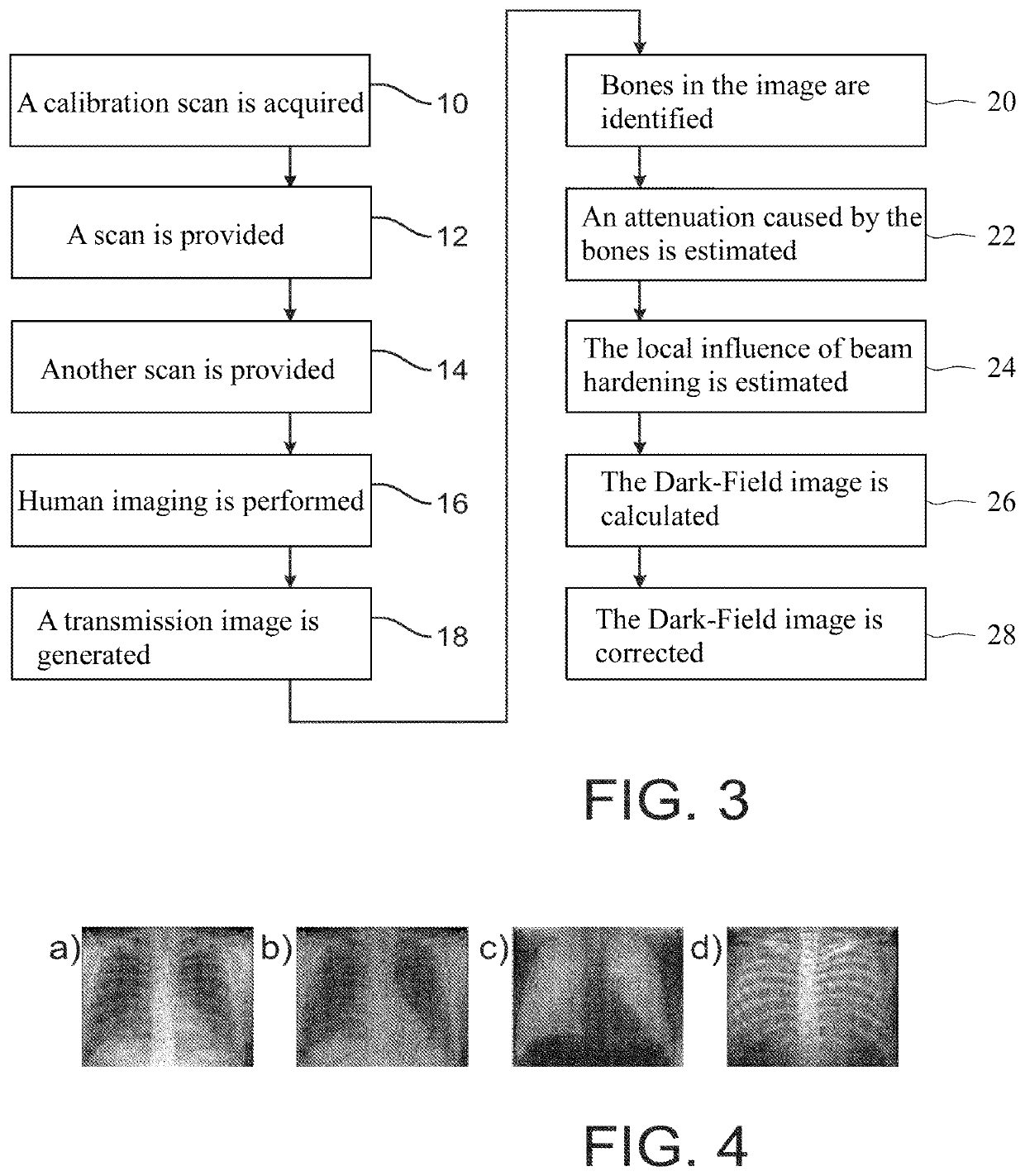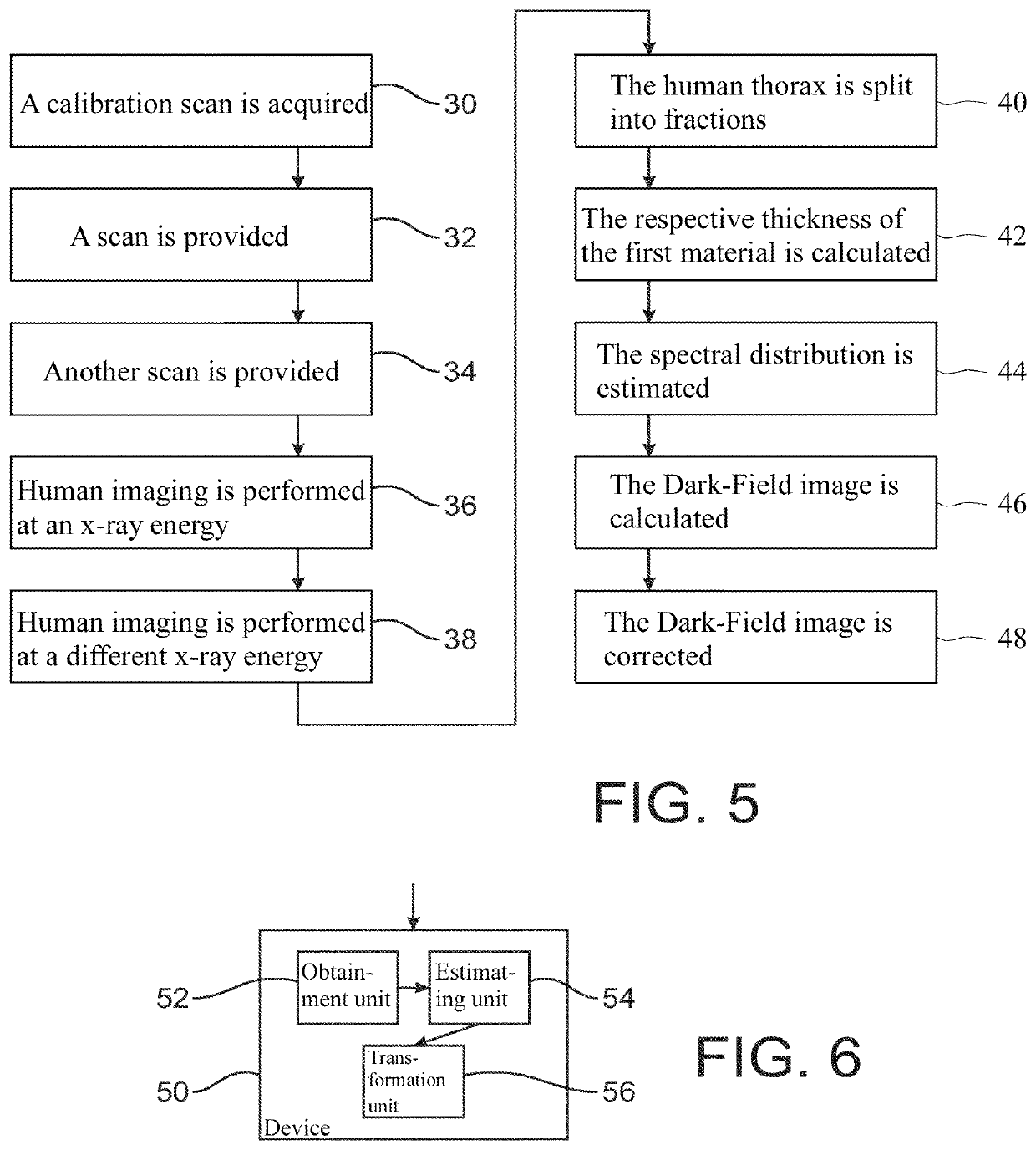Beam hardening correction in x-ray dark-field imaging
a dark-field imaging and beam hardening technology, applied in the direction of material analysis using wave/particle radiation, instruments, applications, etc., can solve the problems of incorrect results, artifacts, and inability to accurately assign all attenuation to a single material, and achieve the effect of robust overall processing
- Summary
- Abstract
- Description
- Claims
- Application Information
AI Technical Summary
Benefits of technology
Problems solved by technology
Method used
Image
Examples
first embodiment
[0057]FIG. 3 shows a flow diagram illustrating a method of correcting for beam hardening according to the present invention.
[0058]In the embodiment illustrated in FIG. 3, before human imaging is performed a calibration scan is acquired in step 10 without anything in the beam.
[0059]Further, in steps 12 and 14, two scans with different thicknesses of two different materials in the beam, respectively, are provided. The two scans are performed separately. Here, the second calibration material has similar absorption properties to the soft tissue (e.g. plastic POM) and the first calibration material has spectral absorption properties similar to the bones (e.g. aluminum).
[0060]Subsequently, human imaging is performed (step 16) and the transmission image is generated (step 18). Based on this transmission image the bones in the image are identified (step 20) and the attenuation caused by the bones is estimated (step 22). Currently available software can generate such bitmaps with the require...
second embodiment
[0080]FIG. 5 shows a flow diagram illustrating a method of correcting for beam hardening according to the present invention.
[0081]Several steps of this embodiment correspond to those discussed above as to the first embodiment.
[0082]Specifically, steps 30 to 34 including the acquisition of a blank calibration scan and calibration scans for different thicknesses of the first and second calibration materials correspond to steps 10 to 14, respectively, which are discussed above.
[0083]Deviating from the first embodiment, however, subsequently, human imaging is performed at two different x-ray energies (e.g. 56 kVp and 120 kVp) (steps 36 and 38) and the transmission images are generated (it is noted here that one of the scans may be a pure transmission scan, e.g. the 120 kVp image, and can be obtained with detuned gratings, or still tuned gratings but only one x-ray shot). Based on these transmission images, the human thorax can be split into the fraction that can be approximated by POM (...
PUM
 Login to View More
Login to View More Abstract
Description
Claims
Application Information
 Login to View More
Login to View More - R&D
- Intellectual Property
- Life Sciences
- Materials
- Tech Scout
- Unparalleled Data Quality
- Higher Quality Content
- 60% Fewer Hallucinations
Browse by: Latest US Patents, China's latest patents, Technical Efficacy Thesaurus, Application Domain, Technology Topic, Popular Technical Reports.
© 2025 PatSnap. All rights reserved.Legal|Privacy policy|Modern Slavery Act Transparency Statement|Sitemap|About US| Contact US: help@patsnap.com



